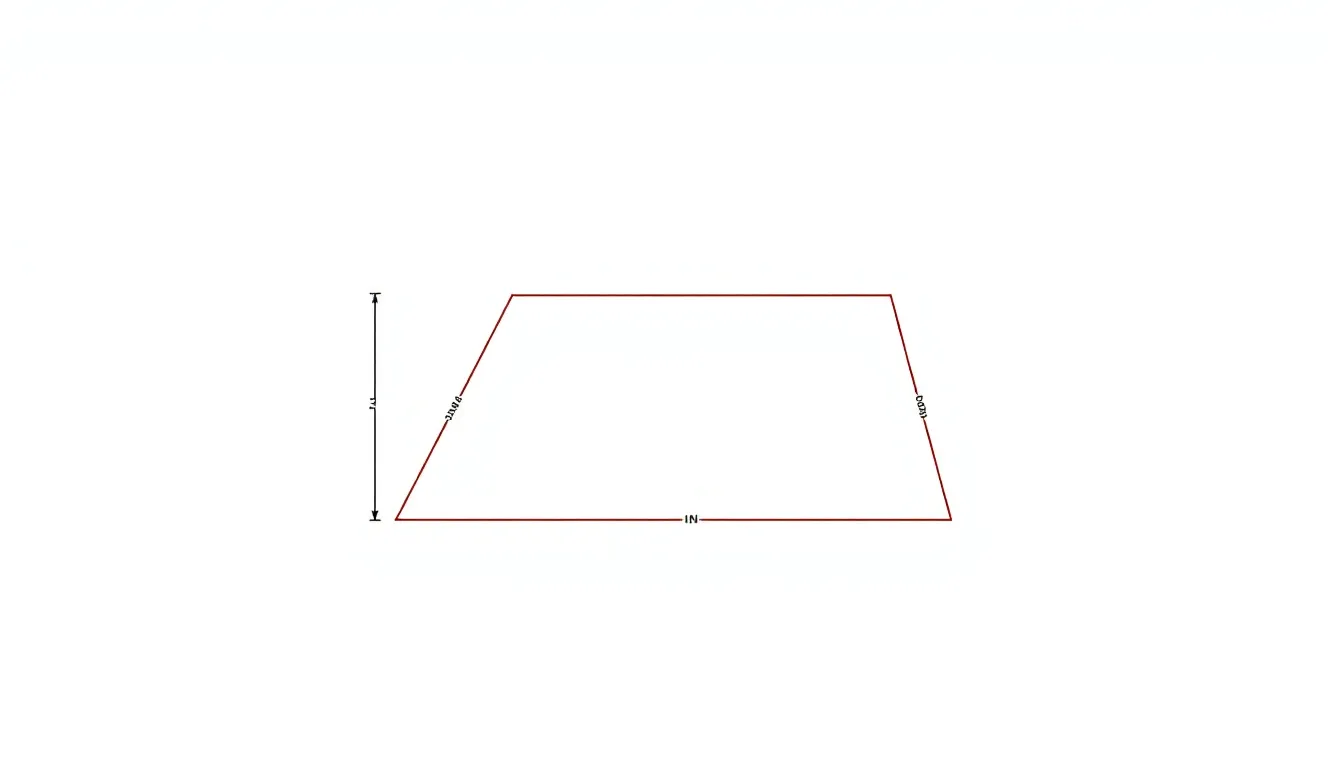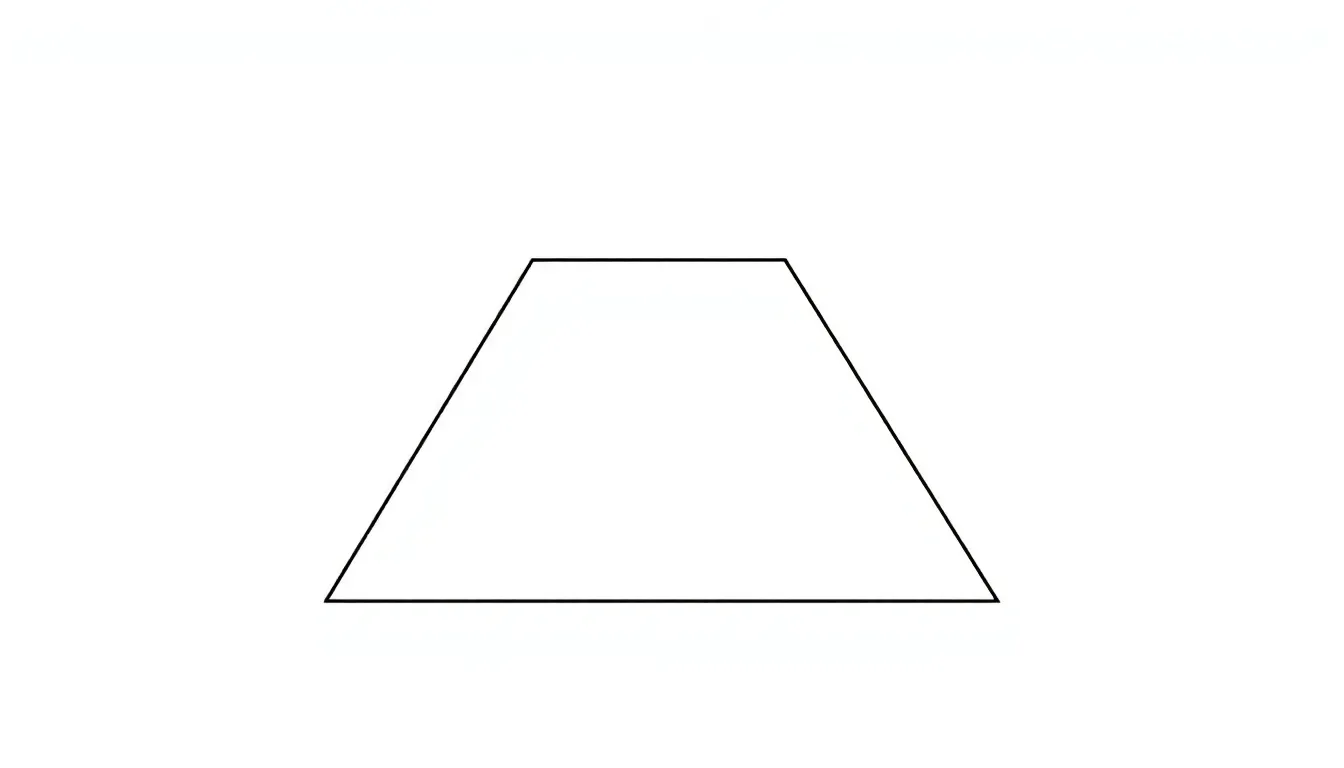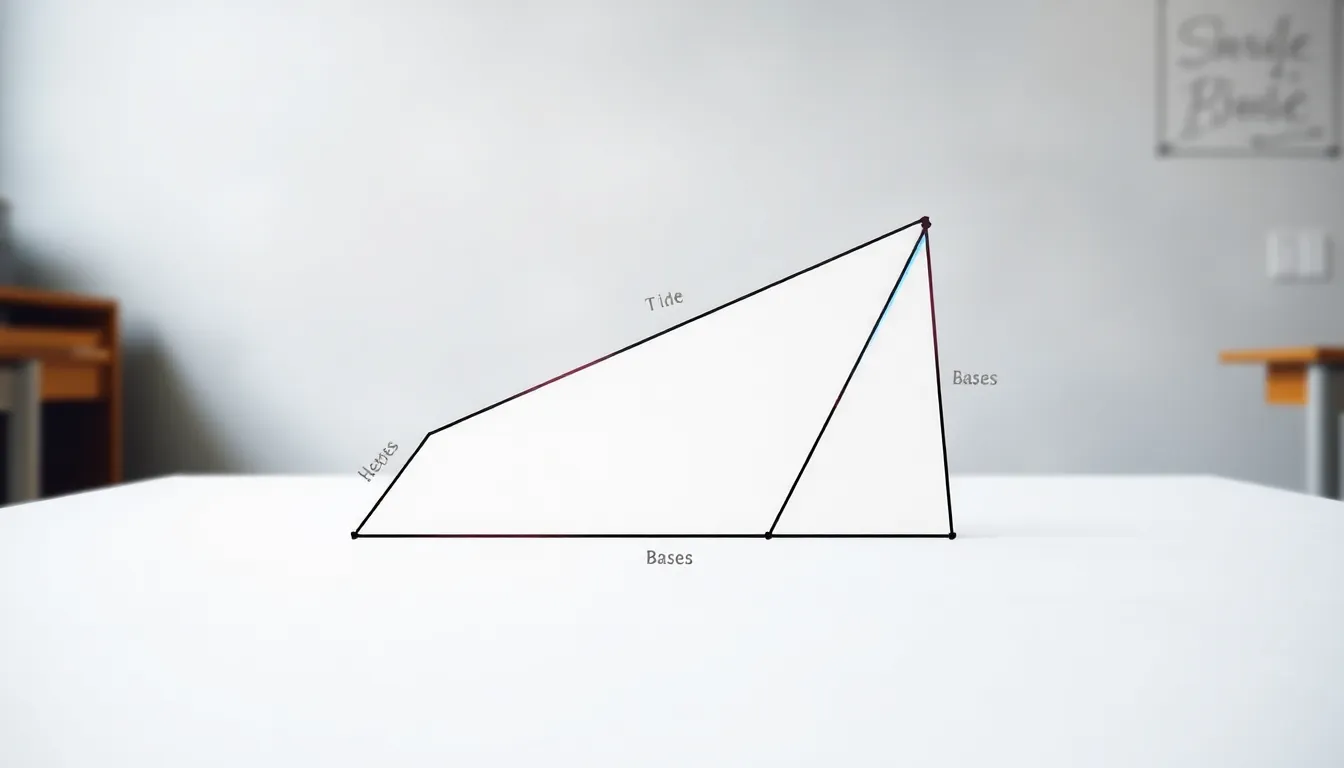Table of Contents
ToggleUnderstanding how to find the area of a trapezoid is essential for anyone dealing with geometry, whether in school, work, or everyday life. This unique shape, with its two parallel sides, often appears in various real-world applications, from architecture to design. Mastering the formula not only simplifies calculations but also enhances spatial reasoning skills.
Understanding Trapezoids
Understanding trapezoids involves recognizing their distinct features and classifications. These shapes serve practical purposes across various fields, making them essential in geometry.
Definition and Properties
A trapezoid, or trapezium in some regions, is a quadrilateral with at least one pair of parallel sides. The parallel sides are known as bases, while the non-parallel sides are called legs. Key properties include:
- Angles: The sum of the interior angles of a trapezoid equals 360 degrees.
- Height: The perpendicular distance between the bases represents the height.
- Symmetry: Certain trapezoids exhibit symmetry, especially isosceles trapezoids, where legs are equal in length and angles adjacent to each base are equal.
Types of Trapezoids
Trapezoids can be categorized mainly into two types:
- Isosceles Trapezoids: These trapezoids have equal non-parallel sides and two pairs of base angles that are equal.
- Scalene Trapezoids: These trapezoids possess no sides or angles that are equal, resulting in a more irregular shape.
Understanding these types helps in applying relevant formulas and selecting appropriate methods for calculations regarding area.
Formula for Area of Trapezoid


The area of a trapezoid can be calculated using a straightforward formula. This formula allows learners and professionals to compute areas efficiently and accurately.
Standard Formula Explanation
The standard formula for finding the area of a trapezoid is
[
text{Area} = frac{(b_1 + b_2) times h}{2}
]
where (b_1) and (b_2) represent the lengths of the two parallel sides (bases) and (h) signifies the height (the perpendicular distance between the bases). This formula combines the lengths of the bases, multiplies by the height, and divides by two, capturing the essence of the trapezoidal shape.
Alternative Methods
Several alternative methods exist for calculating the area of a trapezoid:
- Decomposition Method: This involves dividing the trapezoid into simpler shapes, such as rectangles and triangles, calculating their areas, and then summing those areas.
- Coordinate Geometry: If the vertices of a trapezoid are known in a coordinate plane, applying the shoelace formula facilitates area calculation based on the coordinates.
These methods provide flexibility and can be particularly useful in specific scenarios or with varying graphical representations.
Step-by-Step Guide on How to Find Area of Trapezoid
Calculating the area of a trapezoid requires precise measurement of its components. This guide outlines the necessary steps, ensuring accurate results.
Measuring Base Lengths
Measuring base lengths involves determining the lengths of the two parallel sides, known as bases.
- Identify the bases: Locate the parallel sides of the trapezoid. Label them as (b_1) (top base) and (b_2) (bottom base).
- Use a ruler: Align a ruler along each base for accuracy. Record the measurements in consistent units, such as inches or centimeters.
- Confirm lengths: Double-check the measurements to ensure they are correct, as accurate base lengths directly impact the area calculation.
Measuring Height
Measuring height entails finding the perpendicular distance between the bases.
- Locate the height: Use a straight edge or measuring tape to identify the perpendicular line connecting the two bases. This line represents the height, denoted as (h).
- Measure the height: Position the measuring device vertically between the bases. Ensure it forms a right angle with the bases for an accurate measurement.
- Record the height: Document the measurement in the same units used for the base lengths to maintain consistency in calculations.
Practical Examples
Calculating the area of a trapezoid can be demonstrated through practical examples that illustrate the standard formula and real-life applications.
Example 1: Using Standard Formula
Consider a trapezoid where the lengths of the two parallel sides (bases) measure 8 cm and 5 cm, with a height of 4 cm.
To find the area, apply the formula:
[
text{Area} = frac{(b_1 + b_2) times h}{2}
]
Substituting the given values:
[
text{Area} = frac{(8 + 5) times 4}{2} = frac{13 times 4}{2} = frac{52}{2} = 26 , text{cm}^2
]
Thus, the area of the trapezoid is 26 cm².
Example 2: Real-Life Application
Trapezoids often appear in architecture and design, such as in the shape of a rooftop or a garden space. For instance, a trapezoidal garden has one side measuring 10 ft and the other 6 ft, with a height of 3 ft.
Utilizing the standard formula:
[
text{Area} = frac{(b_1 + b_2) times h}{2}
]
Substituting the dimensions:
[
text{Area} = frac{(10 + 6) times 3}{2} = frac{16 times 3}{2} = frac{48}{2} = 24 , text{ft}^2
]
The area of the trapezoidal garden is 24 ft², illustrating the practical need for area calculations in planning and designing spaces.




